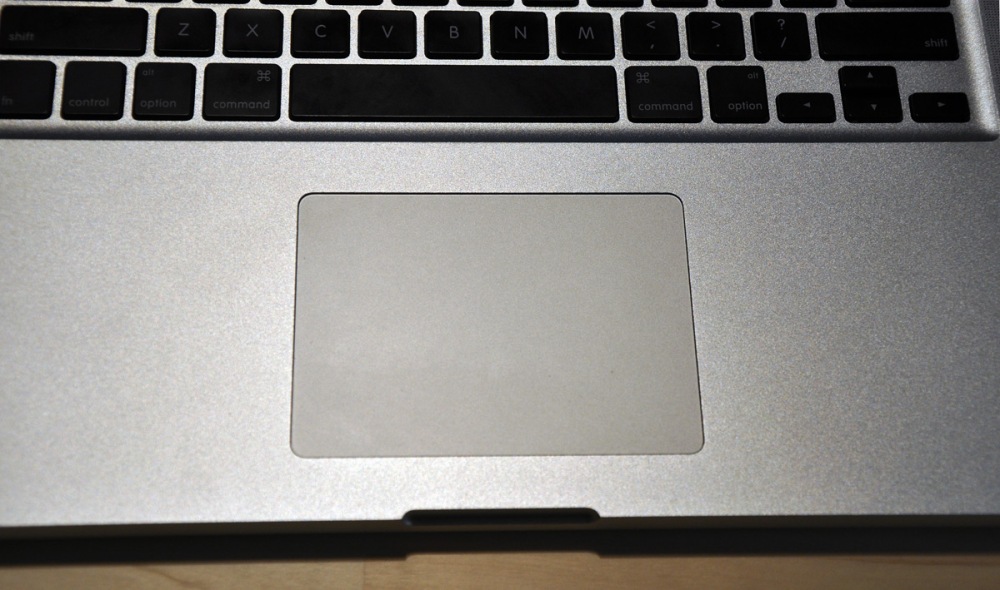
In this case study, I’d like to briefly talk about the Apple Macbook trackpad and my experience as a user. I’ve had my Macbook Pro for about 5 years now and it’s one of my favorite tools. The trackpad and it’s gestures are the features that make the experience unique compared to a traditional laptop.
Hardware
The Macbook Pro’s trackpad is a single rectangular surface embedded in the center right below the keyboard. It’s important to note that there are no other buttons attached to the trackpad like shown in the picture below.

Again, it’s a single surface which can be pressed down for clicking. I’d like to also mention that newer versions of the MacBook Pro offer Force Touch. This adds another layer of interactivity. For this study however, I’ll stick to the functions of a trackpad without Force Touch.
Gestures
The most recent version of OSX (10.11) offers many different gestures. It of course uses a single tap as a click but everything else is unique based on the way the trackpad is designed. Since there aren’t any extra buttons, all of the gestures rely on the user’s fingers.
For scrolling, the gesture is the use of two fingers. There is an option to have the scroll direction be “natural”. This means that when the fingers scroll up, the screen scrolls down (and vice-versa). Now, it may not make sense at first, but when you use it for a while, it makes sense. It can be best described as using a tablet to navigate. Other gestures include zooming in/out and rotate. To zoom in, you need to put two fingers together on the trackpad and spread them out (the opposite for zooming out). For rotating, you must put two fingers on the trackpad and spin them around as if you’re rotating something with your fingers.
The gestures on the trackpad are to feel as if you’re actually touching the screen to navigate. I used to not use the natural setting because it didn’t make sense to me, but after giving it a try and sticking with it, I decided that it made more sense when navigating. It just felt better.
One of the issues I’ve observed was the right-clicking gesture. To right click, you simply need to click using two fingers. Users coming from traditional touchpads find themselves confused when interacting with a Macbook because there isn’t a physical button to right-click.
Issues
Precision and control is an issue with the trackpad. I find that when playing games, I would much rather prefer to use a traditional mouse. I can imagine for visual editors that using a mouse would be better for making those precise edits.
It’s really optimized for Apple’s software. When I create music in Logic Pro or edit videos on Final Cut Pro, I prefer using the trackpad. It makes navigation around the software and editing much easier than a mouse.
Sure, the trackpad is intuitive and natural. This only really applies to the basic functionality of the operating system and the software optimized to work with it. Still, this trackpad can’t be used for everything. There are certain tasks that this type of interface isn’t suited for but like any specific task, a particular tool would be needed. For every other task however, the experience is very pleasant.
Conclusion
For a new user, it may take some time to getting used to, but once it’s used more, it makes sense. Apple removed the redundancy of extra buttons with these gestures. The users have a natural control of motion when navigating on their machine. This paired with the fluidity of the software makes the experience that much more better.